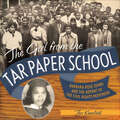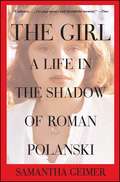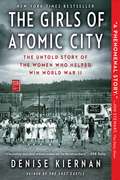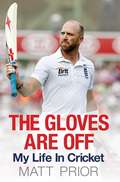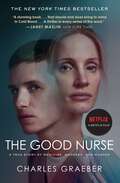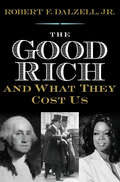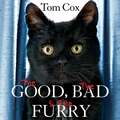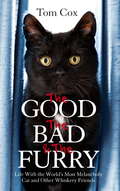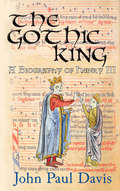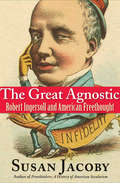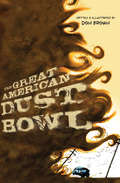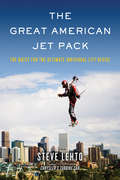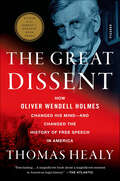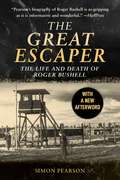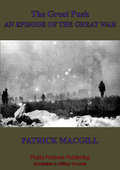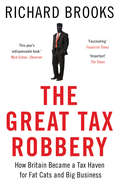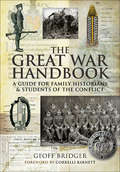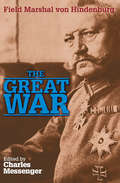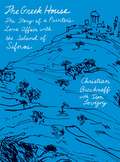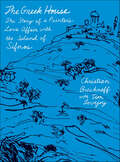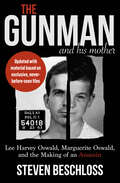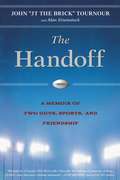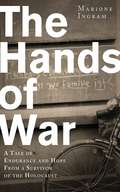- Table View
- List View
The Girl from the Tar Paper School: Barbara Rose Johns and the Advent of the Civil Rights Movement
by Teri KanefieldBefore the Little Rock Nine, before Rosa Parks, before Martin Luther King Jr. and his March on Washington, there was Barbara Rose Johns, a teenager who used nonviolent civil disobedience to draw attention to her cause. In 1951, witnessing the unfair conditions in her racially segregated high school, Barbara Johns led a walkout—the first public protest of its kind demanding racial equality in the U.S.—jumpstarting the American civil rights movement. Ridiculed by the white superintendent and school board, local newspapers, and others, and even after a cross was burned on the school grounds, Barbara and her classmates held firm and did not give up. Her school’s case went all the way to the Supreme Court and helped end segregation as part of Brown v. Board of Education. Barbara Johns grew up to become a librarian in the Philadelphia school system. The Girl from the Tar Paper School mixes biography with social history and is illustrated with family photos, images of the school and town, and archival documents from classmates and local and national news media. The book includes a civil rights timeline, bibliography, and index.
The Girl: A Life in the Shadow of Roman Polanski
by Samantha GeimerIn this searing and surprising memoir, Samantha Geimer, "the girl" at the center of the infamous Roman Polanski sexual assault case, breaks a virtual thirty-five-year silence to tell her story and reflect on the events of that day and their lifelong repercussions. March 1977, Southern California. Roman Polanski drives a rented Mercedes along Mulholland Drive to Jack Nicholson's house. Sitting next to him is an aspiring actress, Samantha Geimer, recently arrived from York, Pennsylvania. She is thirteen years old. The undisputed facts of what happened in the following hours appear in the court record: Polanski spent hours taking pictures of Samantha on a deck overlooking the Hollywood Hills, on a kitchen counter, topless in a Jacuzzi. Wine and Quaaludes were consumed, balance and innocence were lost, and a young girl's life was altered forever--eternally cast as a background player in her own story. For months on end, the Polanski case dominated the media in the US and abroad. But even with the extensive coverage, much about that day and the girl at the center of it all remains a mystery. Just about everyone had an opinion about the renowned director and the girl he was accused of drugging and raping. Who was the predator? Who was the prey? Was the girl an innocent victim or a cunning Lolita artfully directed by her ambitious stage mother? How could the criminal justice system have failed all the parties concerned in such a spectacular fashion? Once Polanski fled the country, what became of Samantha, the young girl forever associated with one of Hollywood's most notorious episodes? Samantha, as much as Polanski, has been a fugitive since the events of that night more than thirty years ago. Taking us far beyond the headlines, "The Girl" reveals a thirteen-year-old who was simultaneously wise beyond her years and yet terribly vulnerable. By telling her story in full for the first time, Samantha reclaims her identity, and indelibly proves that it is possible to move forward from victim to survivor, from confusion to certainty, from shame to strength.
The Girls of Atomic City: The Untold Story of the Women Who Helped Win World War II
by Denise KiernanThe New York Times bestseller, now available in paperback—an incredible true story of the top-secret World War II town of Oak Ridge, Tennessee, and the young women brought there unknowingly to help build the atomic bomb.“The best kind of nonfiction: marvelously reported, fluidly written, and a remarkable story...As meticulous and brilliant as it is compulsively readable.” —Karen Abbott, author of Sin in the Second CityAt the height of World War II, Oak Ridge, Tennessee, was home to 75,000 residents, and consumed more electricity than New York City, yet it was shrouded in such secrecy that it did not appear on any map. Thousands of civilians, many of them young women from small towns across the U.S., were recruited to this secret city, enticed by the promise of solid wages and war-ending work. What were they actually doing there? Very few knew. The purpose of this mysterious government project was kept a secret from the outside world and from the majority of the residents themselves. Some wondered why, despite the constant work and round-the-clock activity in this makeshift town, did no tangible product of any kind ever seem to leave its guarded gates? The women who kept this town running would find out at the end of the war, when Oak Ridge’s secret was revealed and changed the world forever.Drawing from the voices and experiences of the women who lived and worked in Oak Ridge, The Girls of Atomic City rescues a remarkable, forgotten chapter of World War II from obscurity. Denise Kiernan captures the spirit of the times through these women: their pluck, their desire to contribute, and their enduring courage. “A phenomenal story,” and Publishers Weekly called it an “intimate and revealing glimpse into one of the most important scientific developments in history.”“Kiernan has amassed a deep reservoir of intimate details of what life was like for women living in the secret city...Rosie, it turns out, did much more than drive rivets.” —The Washington Post
The Glass-Blowers (Vmc Ser. #543)
by Daphne Du MaurierFROM THE BESTSELLING AUTHOR OF REBECCA'Perhaps we shall not see each other again. I will write to you, though, and tell you, as best I can, the story of your family. A glass-blower, remember, breathes life into a vessel, giving it shape and form and sometimes beauty; but he can with that same breath, shatter and destroy it'Faithful to her word, Sophie Duval reveals to her long-lost nephew the tragic story of a family of master craftsmen in eighteenth-century France. The world of the glass-blowers has its own traditions, it's own language - and its own rules.'If you marry into glass' Pierre Labbe warns his daughter, 'you will say goodbye to everything familiar, and enter a closed world'. But crashing into this world comes the violence and terror of the French Revolution against which, the family struggles to survive.The Glass Blowers is a remarkable achievement - an imaginative and exciting reworking of du Maurier's own family history.
The Gloves Are Off: My Life in Cricket
by Matt PriorSince he took over the gloves in the England side in 2007, Matt Prior has become a vital part of England's subsequent success and strategy. In this book he looks at the key moments of his career to reveal how England achieved so much success, winning two Ashes series and rising to the top of the international rankings. From touring India in the aftermath of the Mumbai terrorist attacks to joining in the celebrations with the Barmy Army in Australia, Prior has seen it all. But what makes Prior's perspective unique is his position at the heart of the action as England's wicket-keeper. He is the man who hears all the banter and sledging; he is the one who gets the best view of some of the world's greatest batsmen up close and personal. Given all that, who better to show what the life of a modern England cricketer is really like than the man at the centre of it all: Matt Prior?
The Good Nurse: A True Story of Medicine, Madness, and Murder
by Charles GraeberAfter his December 2003 arrest, registered nurse Charlie Cullen was quickly dubbed "The Angel of Death" by the media. But Cullen was no mercy killer, nor was he a simple monster. He was a favorite son, husband, beloved father, best friend, and celebrated caregiver. Implicated in the deaths of as many as 300 patients, he was also perhaps the most prolific serial killer in American history. Cullen's murderous career in the world's most trusted profession spanned sixteen years and nine hospitals across New Jersey and Pennsylvania. When, in March of 2006, Charles Cullen was marched from his final sentencing in an Allentown, Pennsylvania, courthouse into a waiting police van, it seemed certain that the chilling secrets of his life, career, and capture would disappear with him. <p><p> Now, in a riveting piece of investigative journalism nearly ten years in the making, journalist Charles Graeber presents the whole story for the first time. Based on hundreds of pages of previously unseen police records, interviews, wire-tap recordings and videotapes, as well as exclusive jailhouse conversations with Cullen himself and the confidential informant who helped bring him down, THE GOOD NURSE weaves an urgent, terrifying tale of murder, friendship, and betrayal. Graeber's portrait of Cullen depicts a surprisingly intelligent and complicated young man whose promising career was overwhelmed by his compulsion to kill, and whose shy demeanor masked a twisted interior life hidden even to his family and friends. <p><p> Were it not for the hardboiled, unrelenting work of two former Newark homicide detectives racing to put together the pieces of Cullen's professional past, and a fellow nurse willing to put everything at risk, including her job and the safety of her children, there's no telling how many more lives could have been lost. In the tradition of In Cold Blood, THE GOOD NURSE does more than chronicle Cullen's deadly career and the breathless efforts to stop him; it paints an incredibly vivid portrait of madness and offers a penetrating look inside America's medical system. Harrowing and irresistibly paced, this book will make you look at medicine, hospitals, and the people who work in them, in an entirely different way.
The Good Rich and What They Cost Us
by Robert F. Dalzell Jr.This timely book holds up for scrutiny a great paradox at the core of the American Dream: a passionate belief in the principle of democracy combined with an equally passionate celebration of the creation of wealth. Americans treasure an open, equal society, yet we also admire those fortunate few who amass riches on a scale that undermines social equality. In today's era of "vulture capitalist" hedge fund managers, internet fortunes, and a growing concern over inequality in American life, should we cling to both parts of the paradox? Can we? To understand the problems that vast individual fortunes pose for democratic values, Robert Dalzell turns to American history. He presents an intriguing cast of wealthy individuals from colonial times to the present, including George Washington, one of the richest Americans of his day, the "robber baron" John D. Rockefeller, and Oprah Winfrey, for whom extreme wealth is inextricably tied to social concerns. Dalzell uncovers the sources of contradictory attitudes toward the rich, how the very rich have sought to be perceived as "good rich," and the facts behind the widespread notion that wealth and generosity go hand in hand. In a thoughtful and balanced conclusion, the author explores the cost of our longstanding attitudes toward the rich. Among the case studies in America's Good Rich:Puritan merchant Robert KeayneGeorge WashingtonManufacturers Amos & Abbot LawrenceOil magnate John D. RockefellerBill GatesWarren BuffetSteve JobsOprah Winfrey
The Good, The Bad and The Furry: Life with the World's Most Melancholy Cat and Other Whiskery Friends
by Tom CoxThe Sunday Times Bestseller: A heartwarming memoir about a man at the mercy of his unpredictable, demanding and endlessly lovable cats.Meet THE BEAR - a cat who carries the weight of the world on his furry shoulders, and whose wise, owl-like eyes seem to ask, Can you tell me why I am a cat, please?Like many intellectuals, The Bear would prefer a life of quiet solitude with plenty of time to gaze forlornly into space and contemplate society's ills. Unfortunately he is destined to spend his days surrounded by felines of a significantly lower IQ . . .RALPH: handsome, self-satisfied tabby, terrified of the clothes horse.SHIPLEY: mouthy hooligan and champion mouser, rendered insensible by being turned upside-down.ROSCOE: fiercely independent kitten, tormented by her doppelganger in the mirror. And then there's Tom, writing with his usual wit and charm about the unexpected adventures that go hand in hand with a life at the beck and call of four cats . . . or three cats and a sensitive poet who just happens to be a foot high and covered in fur.
The Good, The Bad and The Furry: The Brand New Adventures of the World's Most Melancholy Cat and Other Whiskery Friends
by Tom CoxThe Sunday Times Bestseller: A heartwarming memoir about a man at the mercy of his unpredictable, demanding and endlessly lovable cats.Meet THE BEAR - a cat who carries the weight of the world on his furry shoulders, and whose wise, owl-like eyes seem to ask, Can you tell me why I am a cat, please?Like many intellectuals, The Bear would prefer a life of quiet solitude with plenty of time to gaze forlornly into space and contemplate society's ills. Unfortunately he is destined to spend his days surrounded by felines of a significantly lower IQ . . .RALPH: handsome, self-satisfied tabby, terrified of the clothes horse.SHIPLEY: mouthy hooligan and champion mouser, rendered insensible by being turned upside-down.ROSCOE: fiercely independent kitten, tormented by her doppelganger in the mirror. And then there's Tom, writing with his usual wit and charm about the unexpected adventures that go hand in hand with a life at the beck and call of four cats . . . or three cats and a sensitive poet who just happens to be a foot high and covered in fur.
The Good, The Bad and The Furry: The Brand New Adventures of the World's Most Melancholy Cat and Other Whiskery Friends
by Tom CoxThe Sunday Times Bestseller: A heartwarming memoir about a man at the mercy of his unpredictable, demanding and endlessly lovable cats.Meet THE BEAR - a cat who carries the weight of the world on his furry shoulders, and whose wise, owl-like eyes seem to ask, Can you tell me why I am a cat, please?Like many intellectuals, The Bear would prefer a life of quiet solitude with plenty of time to gaze forlornly into space and contemplate society's ills. Unfortunately he is destined to spend his days surrounded by felines of a significantly lower IQ . . .RALPH: handsome, self-satisfied tabby, terrified of the clothes horse.SHIPLEY: mouthy hooligan and champion mouser, rendered insensible by being turned upside-down.ROSCOE: fiercely independent kitten, tormented by her doppelganger in the mirror. And then there's Tom, writing with his usual wit and charm about the unexpected adventures that go hand in hand with a life at the beck and call of four cats . . . or three cats and a sensitive poet who just happens to be a foot high and covered in fur.
The Gothic King: A Biography of Henry III
by John Paul DavisThe first biography in many years of Henry IIIThe son and successor of Bad King John, Henry III reigned for 56 years from 1216, the first child king in England for 200 years. England went on to prosper during his reign and his greatest monument is Westminster Abbey, which he made the seat of his government--indeed, Henry III was the first English King to call a parliament. Though often overlooked by historians, Henry III was a unique figure coming out of a chivalric yet Gothic era: a compulsive builder of daunting castles and epic sepulchres; a powerful, unyielding monarch who faced down the De Montfort rebellion and waged war with Wales and France; and, much more than his father, Henry was the king who really hammered out the terms of the Magna Carta with the barons. John Paul Davis brings all his forensic skills and insights to the grand story of the Gothic King in this, the only biography in print of a most remarkable monarch.
The Great Agnostic: Robert Ingersoll and American Freethought
by Susan Jacoby&“Jacoby writes with wit and vigor, affectionately resurrecting a man whose life and work are due for reconsideration&” (The Boston Globe). During the Gilded Age, which saw the dawn of America&’s enduring culture wars, Robert Green Ingersoll was known as &“the Great Agnostic.&” The nation&’s most famous orator, he raised his voice on behalf of Enlightenment reason, secularism, and the separation of church and state with a power unmatched since America&’s revolutionary generation. When he died in 1899, even his religious enemies acknowledged that he might have aspired to the US presidency had he been willing to mask his opposition to religion. To the question that retains its controversial power today—was the United States founded as a Christian nation?—Ingersoll answered an emphatic no. In this provocative biography, Susan Jacoby, author of Freethinkers: A History of American Secularism, restores Ingersoll to his rightful place in an American intellectual tradition extending from Thomas Jefferson and Thomas Paine to the current generation of &“new atheists.&” Jacoby illuminates the ways in which America&’s often-denigrated and forgotten secular history encompasses issues, ranging from women&’s rights to evolution, as potent and divisive today as they were in Ingersoll&’s time. Ingersoll emerges in this portrait as an indispensable public figure who devoted his life to that greatest secular idea of all—liberty of conscience belonging to the religious and nonreligious alike. &“Jacoby&’s goal of elucidating the life and work of Robert Ingersoll is admirably accomplished. She offers a host of well-chosen quotations from his work, and she deftly displays the effect he had on others. For instance: after a young Eugene V. Debs heard Ingersoll talk, Debs accompanied him to the train station and then—just so he could continue the conversation—bought himself a ticket and rode all the way from Terre Haute to Cincinnati. Readers today may well find Ingersoll&’s company equally entrancing.&” —Jennifer Michael Hecht, The New York Times Book Review
The Great American Dust Bowl
by Don BrownA speck of dust is a tiny thing. In fact, five of them could fit into the period at the end of this sentence.On a clear, warm Sunday, April 14, 1935, a wild wind whipped up millions upon millions of these specks of dust to form a duster—a savage storm—on America's high southern plains. The sky turned black, sand-filled winds scoured the paint off houses and cars, trains derailed, and electricity coursed through the air. Sand and dirt fell like snow—people got lost in the gloom and suffocated . . . and that was just the beginning.Don Brown brings the Dirty Thirties to life with kinetic, highly saturated, and lively artwork in this graphic novel of one of America's most catastrophic natural events: the Dust Bowl.
The Great American Jet Pack: The Quest for the Ultimate Individual Lift Device
by Steve LehtoTracing the remarkable history of a certain kind of flying machine--from the rocket belt to the jet belt to the flying platform and all the way to Yves Rossy's 21st-century free flights using a jet-powered wing--this historical account delves into the technology that made these devices possible and the reasons why they never became commercial successes on a mass scale. These individual lift devices, as they were blandly labeled by the government men who financed much of their development, answered man's desire to simply step outside and take flight. No runways, no wings, no pilot's license were required. But the history of the jet pack did not follow its expected trajectory and the devices that were thought to become as commonplace as cars have instead become one of the most overpromised technologies of all time. This fascinating account profiles the inventors and pilots, the hucksters and cheats, and the businessmen and soldiers who were involved with the machines, and it tells a great American story of a technology whose promise may yet, one day, come to fruition.
The Great Dissent: How Oliver Wendell Holmes Changed His Mind—and Changed the History of Free Speech in America
by Thomas HealyA Kirkus Reviews Best Nonfiction Book of the Year: “Fascinating . . . A magnificent book about a magnificent moment in American legal history.” —The AtlanticA Winner of the Robert F. Kennedy Book AwardNo right seems more fundamental to American public life than freedom of speech. Yet well into the twentieth century, that freedom was still an unfulfilled promise, with Americans regularly imprisoned merely for speaking out against government policies. Indeed, free speech as we know it comes less from the First Amendment than from a most unexpected source: Supreme Court justice Oliver Wendell Holmes. A lifelong skeptic, he disdained individual rights, including the right to express one’s political views. But in 1919, it was Holmes who wrote a dissenting opinion that would become the canonical affirmation of free speech in the United States.Why did Holmes change his mind? That question has puzzled historians for almost a century. Now, with the aid of newly discovered letters and confidential memos, law professor Thomas Healy reconstructs in vivid detail Holmes’s journey from free-speech opponent to First Amendment hero. It is the story of a remarkable behind-the-scenes campaign by a group of progressives to bring a legal icon around to their way of thinking—and a deeply touching human narrative of an old man saved from loneliness and despair by a few unlikely young friends.Beautifully written and exhaustively researched, The Great Dissent is intellectual history at its best, revealing how free debate can alter the life of a man and the legal landscape of an entire nation.“Compelling [and] charming.” —The Wall Street Journal“A beautifully written history, capturing the lively and passionate debate as Holmes came to see the abiding imperative of free speech and defend it at great cost to his own reputation at the time.” —Booklist“A stirring mix of intelligent biography and truly significant social and legal history.” —TheChristian Science Monitor
The Great Escaper: The Life and Death of Roger Bushell
by Simon PearsonA Sunday Times bestseller, the real story behind the mastermind of the most famous breakout in history—The Great Escape. While the most famous images from the 1963 film The Great Escape include either a motorcycle or a ball—but definitely Steve McQueen—Richard Attenborough played the part of &“Big X,&” the British mastermind behind the greatest escape in history. Like the subject of the film, &“Big X&” was a real person. Roger Bushell was the mastermind of the mass breakout from Stalag Luft III in March 1944. Very little was known about Bushell until 2011, when his family donated his private papers to the Imperial War Museum. Through exclusive access to this material, as well as new research from other sources, Simon Pearson has written the first biography of this iconic figure. Born in South Africa in 1910, Roger Bushell was the son of a British mining engineer. On May 23, 1940, his Spitfire was shot down during a dogfight over Boulogne after destroying two German fighters. Over the next four years he made three escapes, coming within one hundred yards of the Swiss border during his first attempt. His third (and last escape) destabilized the Nazi leadership and captured the imagination of the world, forever immortalized by Hollywood. Simon Pearson's revealing biography is a vivid account of war and love, triumph and tragedy—and one man's attempt to challenge remorseless tyranny in the face of impossible odds.
The Great Push - An Episode Of The Great War
by Patrick MacgillWinner of a much esteemed star from doyen of First World War writers Cyril Falls, the author writes of the battle of Loos in 1915, particularly graphically. MacGill was actually engaged and wounded during the battle whilst serving with the London Irish Rifles."MacGill, who had won considerable fame as a writer of "navvy " romances before the War, wrote one of the most vivid English accounts of a battle that was published while it was still in progress. He used to be known as a "powerful," meaning a rather brutal writer, but a study of The Great Push beside some of the contemporary novels and narratives will show what an admirable advance in "power" has been made since then. His account covers quite a short period: the Battle of Loos with its preparatory period and its aftermath. He himself was a stretcher-bearer. He saw the famous football dribbled over by his regiment, the London Irish, and saw it afterwards deflated on the German wire. The passages describing a night in Loos and the subsequent panic are very fine." p. 215 Cyril Falls. War Books, London, 1930.
The Great Tax Robbery
by Richard BrooksInvestigative journalist and former tax-inspector Richard Brooks makes a mockery of government promises to "crack" the problem of tax avoidance. Discover why thousands of British state schools and NHS hospitals are owned by shell companies based in offshore tax havens; how "British" companies like Vodafone are designing their own tax laws; and how the taxman turns a blind eye to billions in illegally evaded tax in secret Swiss bank accounts. This ground-breaking exposé charts how the UK has become a global tax haven that serves the super wealthy, while everyone else picks up the bill. From offshore City bonus schemes to the exploitation of developing countries, Brooks unpicks the tangled mess of loopholes that well known multinationals, bankers, and celebrities use to legally circumvent British tax. Shocking and riveting, this is a bold manifesto for a tax system where we all contribute our fair share.
The Great War Handbook: A Guide for Family Historians & Students of the Conflict
by Geoff BridgerGeoff Bridgers The Great War Handbook answers many of the basic questions newcomers ask when confronted by this enormous and challenging subject not only what happened and why, but what was the Great War like for ordinary soldiers who were caught up in it. He describes the conditions the soldiers endured, the deadly risks they ran, their daily routines and the small roles they played in the complex military machine they were part of. His comprehensive survey of every aspect of the soldiers life, from recruitment and training, through the experience of battle and its appalling aftermath, is an essential guide for students, family historians, teachers and anyone who is eager to gain an all-round understanding of the nature of the conflict. His authoritative handbook gives a fascinating insight into the world of the Great War - it is a basic book that no student of the subject can afford to be without.
The Great War: Field Marshal Von Hindenburg
by Charles MessengerRevered as the epitome of German militarism and moral decency, Field Marshal Paul von Hindenburg was one of the most popular and dominant figures of the Great War and of 20th - century Germany. Alongside Erich Ludendorff he secured a crucial victory over
The Greek House: The Story of a Painter's Love Affair With the Island of Sifnos
by Christian Brechneff Tim LovejoyA richly rewarding narrative about a young painter's love affair with the Greek island of Sifnos When Christian Brechneff first set foot on the Greek island of Sifnos, it was the spring of 1972 and he was a twenty-one-year-old painter searching for artistic inspiration and a quiet place to work. There, this Swiss child of Russian émigrés, adrift and confused about his sexuality, found something extraordinary. In Sifnos, he found a muse, a subject he was to paint for years, and a sanctuary. InThe Greek House, Brechneff tells a funny, touching narrative about his relationship to Sifnos, writing with warmth about its unforgettable residents and the house he bought in a hilltop farm village. This is the story of how he fell in love with Greece, and how it became a haven from the complexities of his life in Western Europe and New York. It is the story of his village and of the island during the thirty-odd years he owned the house--from a time when there were barely any roads, to the arrival of the modern world with its tourists and high-speed boats and the euro. And it is the story of the end of the love affair--how the island changed and he changed, how he discovered he had outgrown Sifnos, or couldn't grow there anymore. The Greek House is a celebration of place and an honest narrative of self-discovery. In its pages, a naive and inexperienced young man comes into his own.
The Greek House: The Story of a Painter's Love Affair with the Island of Sifnos
by Christian Brechneff Tim LovejoyA richly rewarding narrative about a young painter's love affair with the Greek island of SifnosWhen Christian Brechneff first set foot on the Greek island of Sifnos, it was the spring of 1972 and he was a twenty-one-year-old painter searching for artistic inspiration and a quiet place to work. There, this Swiss child of Russian émigrés, adrift and confused about his sexuality, found something extraordinary. In Sifnos, he found a muse, a subject he was to paint for years, and a sanctuary. In The Greek House, Brechneff tells a funny, touching narrative about his relationship to Sifnos, writing with warmth about its unforgettable residents and the house he bought in a hilltop farm village. This is the story of how he fell in love with Greece, and how it became a haven from the complexities of his life in Western Europe and New York. It is the story of his village and of the island during the thirty-odd years he owned the house—from a time when there were barely any roads, to the arrival of the modern world with its tourists and high-speed boats and the euro. And it is the story of the end of the love affair—how the island changed and he changed, how he discovered he had outgrown Sifnos, or couldn't grow there anymore.The Greek House is a celebration of place and an honest narrative of self-discovery. In its pages, a naïve and inexperienced young man comes into his own. Weaving himself into the life of the island, painting it year after year, he finds a place he can call home.
The Gunman and His Mother: Lee Harvey Oswald, Marguerite Oswald, and the Making of an Assassin
by Steven BeschlossThis &“groundbreaking&” biography of Lee Harvey Oswald&’s formative years &“provides new insight into the character of the man who murdered a president&” (Michael Takiff, author of A Complicated Man and Brave Men, Gentle Heroes). The narrative of the assassination of President John F. Kennedy has been told from many points of view, most significantly in the wave of books exploring the Warren Commission&’s findings and the conspiracy theories that followed. But for journalist Steven Beschloss, the story of Lee Harvey Oswald began with the troubled bond he had with his mother. Drawing on public records, key interviews with Marguerite Oswald and other family members, and Lee&’s own writing and statements, Beschloss traces the origins of an American tragedy back to the lonely boy who couldn&’t find a way to belong and the unstable mother with a grudge against the world. Often left to his own devices, young Oswald read heavily, skipped school, and hatched plans to make his mark on the world. The Gunman and His Mother reveals the complex parental relationship that turned a boy into a killer responsible for a crime that changed American history. This updated edition, published in time for the sixtieth anniversary of JFK&’s assassination, includes material from never-before-seen files containing Marguerite Oswald&’s personal writings, as well as a series of lawsuits Marguerite brought against various people, including Jimmy Breslin, William Manchester, and Gerald Ford. Not only do these documents complete the portrait of Lee&’s mother, but given her attacks on the media, conspiratorial mindset, and her sense of grievance, their inclusion sheds new light on our current political climate. &“Haunting and compelling . . . reads like a Greek tragedy.&” —Ralph Pezzullo, author of Jawbreaker and Inside SEAL Team Six
The Handoff: A Memoir of Two Guys, Sports, and Friendship
by Alan Eisenstock John TournourJohn Tournour, known to his many listeners and fans as JT the Brick, is one of the biggest sports radio personalities in America. Making it as a sports radio host is almost impossible, and JT went about it in a fearless way, leaving a lucrative position as a Merrill Lynch stockbroker to pursue his dream. But Tournour's hardest challenge would come when his best friend and mentor, Andrew Ashwood was diagnosed with cancer.THE HANDOFF is about JT the Brick's rise to sports radio stardom, and how his entire view of life changed as his best friend fought a losing battle to a deadly disease. As Andrew heroically endured chemotherapy treatment after treatment, Tournour was at his side, marveling at his friend's bravery and trying to be there for him as best he could. THE HANDOFF is about facing your fears, the power of connection, and the incredible lessons Tournour learned from his dear friend.
The Hands of War: A Tale of Endurance and Hope, from a Survivor of the Holocaust
by Keith Lowe Marione IngramMarione Ingram grew up in Hamburg, Germany, in the late 1930s and early 1940s. She was German. She was Jewish. She was a survivor. This is her story.As a young girl, Marione was aware that people of the Jewish faith were regarded as outsiders, the supposed root of Germany's many problems. She grew up in an apartment building where neighbors were more than happy to report Jews to the Gestapo. Marione's mother attempted suicide after receiving a deportation notice--Marione revived her, but then the bombs started to fall, as the Allies leveled the city in eight straight days of bombings. Somehow Marione and her mother and sister survived the devastating firestorms--more than 40,000 perished, and almost the same numbered were wounded.Marione and her family miraculously escaped and sought shelter with a contact in the countryside who grudgingly agreed to house them in a shed for more than a year. With the war drawing to a close, they went west, back to Hamburg. There they encountered Allied troops, who reinstalled the local government (made up of ex-Nazis) in order to keep order in the country. Life took on the air of what it used to be. Jews were still second-class citizens.Marione eventually took shelter at a children's home in a mansion once owned by wealthy Jewish bankers. There she met Uri, a troubled orphan and another one of the "Children of Blankenese." Uri's story, a bleak tale of life in the concentration camps, explores a different side of the Nazi terror in Germany.In this stirring account of World War II through the eyes of a child, the author's eloquent narrative elicits compassion from readers.
